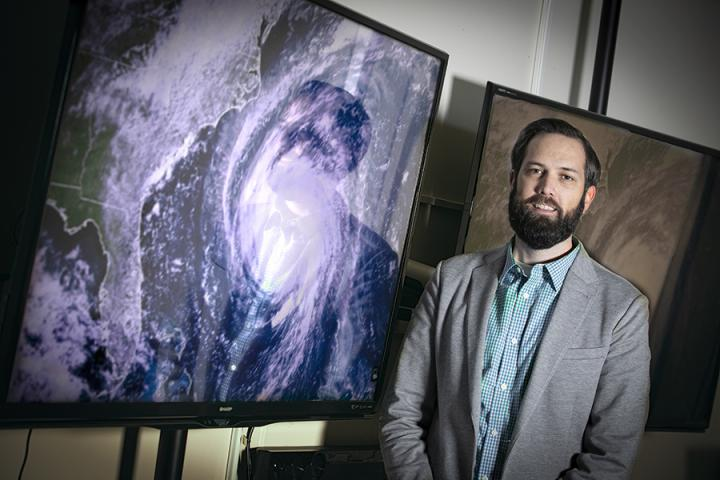Jan 3 2020
According to a new study, Hurricane Florence was spatially larger owing to climate change caused by humans and generated more extreme rainfall.
 Kevin Reed, PhD. Image Credit: Stony Brook University.
Kevin Reed, PhD. Image Credit: Stony Brook University.
The study was headed by Kevin Reed, PhD, an Assistant Professor in the School of Marine and Atmospheric Sciences (SoMAS) at Stony Brook University. It has been published in the Science Advances journal.
Earlier studies have indicated that the influences of humans, like the release of greenhouse gases that change the climate, indeed have an impact on precipitation in severe storms.
But the research carried out on this analysis was the first to apply a new “forecast attribution” framework. This framework allows researchers to study how climate change will have an impact on days of individual storm events.
Extreme weather changes are one of the harshest ways people experience the effect of climate change. Natural disasters and adverse weather conditions are responsible for causing extensive damage and have a significant economic influence on nations.
At the national level, Reed and collaborators are analyzing ways to improve the prediction of extreme storms with regard to climate change.
Earlier in 2018, Reed and collaborators made forecasts based on replications of the storm-specified climate change models. These predictions were made before the landfall of Hurricane Florence.
The researchers predicted that Hurricane Florence would be somewhat more powerful for a longer part of the predicted period. They also predicted that the amounts of rainfall over the Carolinas would be higher by 50% because of warmer temperatures of water as well as climate change, and that Hurricane Florence would be approximately 80 km larger because of the impact of climate change on the large-scale setting surrounding the storm.
With our ability for additional ‘hindsight’ numerical modeling of the storm around climate change factors, we found predictions about increases in storm size and increased storm rainfall in certain areas to be accurate, even if the numbers and proportions are not exact.
Kevin Reed, PhD, Assistant Professor, School of Marine and Atmospheric Sciences, Stony Brook University
Reed continued, “More importantly, this post-storm modeling around climate change illustrates that the impact of climate change on storms is here now and is not something only projected for our future.”
The post-storm study certainly demonstrated that the storm was somewhat more powerful during the prediction period caused by climate change—as predicted by the team—as quantified by near-surface winds and minimum surface pressure. However, despite this fact, the study outcomes continue to be extremely vague from the hindsight attribution model, Reed added.
One major discovery of the post-storm model demonstrated that Hurricane Florence was approximately 9 km larger in the mean maximum diameter caused by climate change. Moreover, the amounts of rainfall across vast ranges were considerably increased.
There was a 4.9% ± 4.6% increase in the mean total amounts of overland rainfall in relation to the core of the predicted storm, with the local maximum amounts increasing by 3.8% ± 5.7% as a result of climate change.
Reed highlighted that by attributing the impacts of climate change to individual storms, as his research team did in the case of Hurricane Florence, researchers can better convey the direct effects of climate change on adverse weather conditions to the public.
The study was partly supported by the Department of Energy’s Office of Science, the Stony Brook Foundation, and the National Science Foundation through the National Center for Atmospheric Research.